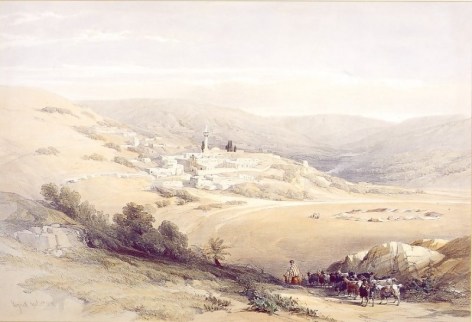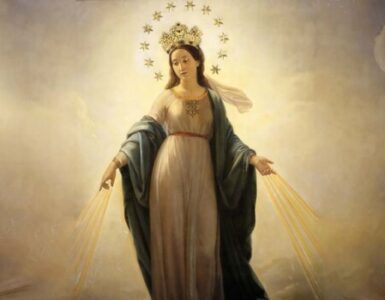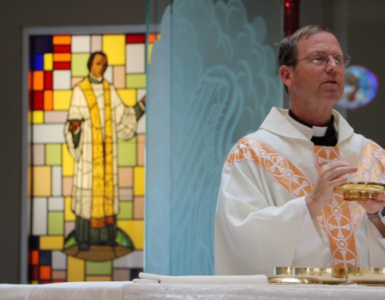
Joseph was a royal figure, descended from David, and, therefore, able to make the claim to be the Messiah: the Lord’s anointed king. David had said that he wanted to build a temple or house for the Lord, but the Lord replied:
“You shall not build me a house to dwell in. . . . Moreover I declare to you that the Lord will build you a house. When your days are fulfilled to go to be with your fathers, I will raise up your offspring after you, one of your own sons, and I will establish his kingdom. He shall build a house for me, and I will establish his throne for ever. I will be his father, and he shall be my son; I will not take my steadfast love from him, as I took it from him who was before you, but I will confirm him in my house and in my kingdom for ever and his throne shall be established for ever.” (1 Chron 17:4, 11-14).
Part of this promise came true when Solomon built the first Temple, but Joseph, as the son of David, also built a house for the Lord, where God literally dwelt on the earth. Furthermore, Jesus, also the Son of David, but, more importantly, Son of the Father, builds a new house for the Lord, an eternal dwelling place, serving as the corner stone Himself. He refers to Himself as the new Temple throughout the Gospels, and, as members of His own Body, we are built into this new Temple as well. St. Peter, the fisherman, understood the nature of this work:
Come to him, to that living stone, rejected by men but in God’s sight chosen and precious; and like living stones be yourselves built into a spiritual house, to be a holy priesthood, to offer spiritual sacrifices acceptable to God through Jesus Christ. For it stands in scripture: ‘Behold, I am laying in Zion a stone, a cornerstone chosen and precious, and he who believes in him will not be put to shame’” (1 Peter 2:4-6).
This helps us to understand why St. Joseph was a builder, preparing Jesus for His ministry. We tend to call him a carpenter, but the Greek, teketon, and the Latin, faber, do not imply the use of wood. The landscape does not even lend itself to a carpenter, as we see in this 19th century painting of the landscape surrounding Nazareth:

Joseph and Jesus were builders, possibly using some wood beams, but more likely employing rock, brick, clay, and plaster. You can see the use of these materials in the construction of ancient Palestinian homes. We can also see this in the home constructed by St. Joseph for the Lord, the holy house now at Loreto (with its foundation still in place at Nazareth). Its composition consists of stone and mortar, more fitting materials for a mason than a carpenter.

Why does this distinction matter? Joseph, though the royal heir, took up the original vocation of subduing the earth through his work, making it a more habitable dwelling place; thus completing and perfecting the work of the Creator through human creativity. He taught Jesus to share in this work and in this served as an image of the Father, the Creator and source of all work. St. John Paul II related this connection in his encyclical on work, Laborem Exercens: “ It can indeed be said that he looks with love upon human work and the different forms that it takes, seeing in each one of these forms a particular facet of man’s likeness with God, the Creator and Father” (26).
There is something about building structures that seems appropriate for the Creator-become-man. Jesus, the Word who pitched his tent among, came to build the new and eternal temple (realized in our eternal union with God in Heaven), of which the world itself is a transitory preparation. Jesus’ work, especially the work of salvation, completes and perfects the initial work of Creation. His work as a builder was not an aside, but laid the foundation for his ministry: building the Church. The temporary construction of our own bodies will be resurrected and transformed through His own glorious and perfected Body, bringing His task of building to its completion.
The post Joseph and Jesus the Builders appeared first on Those Catholic Men.
This article is reprinted with permission from our friends at Those Catholic Men.













